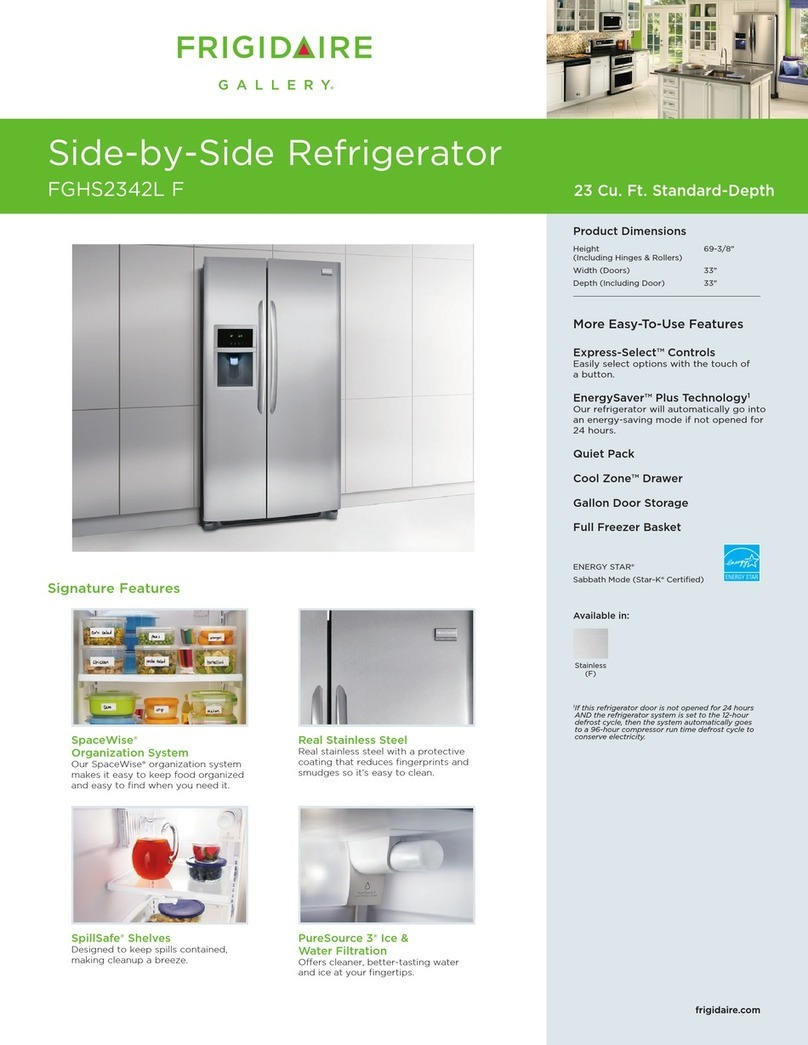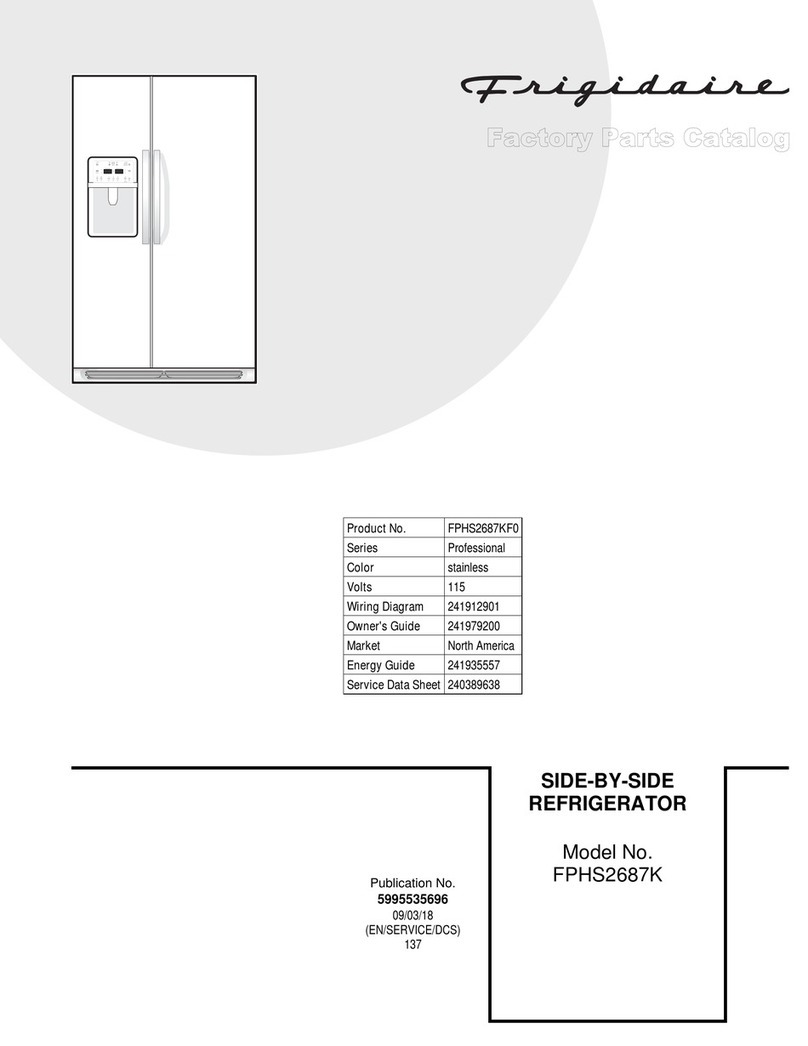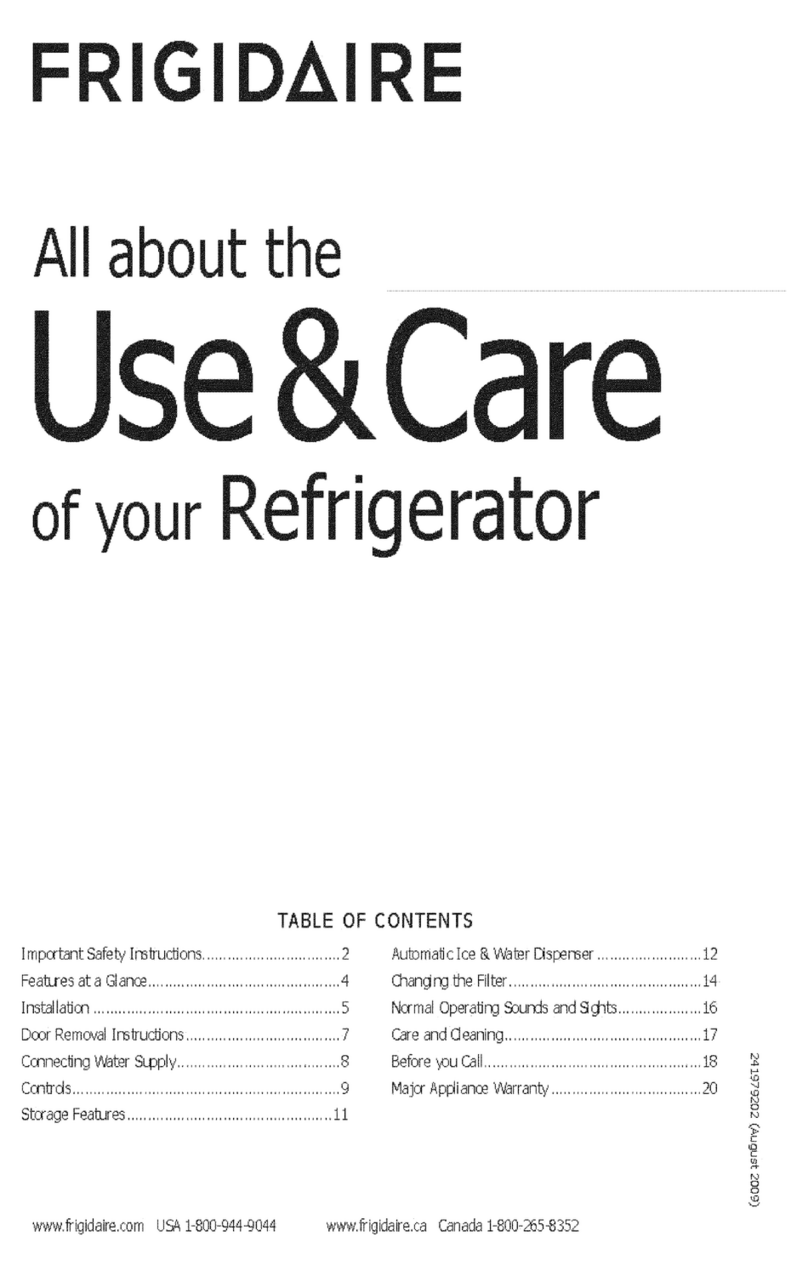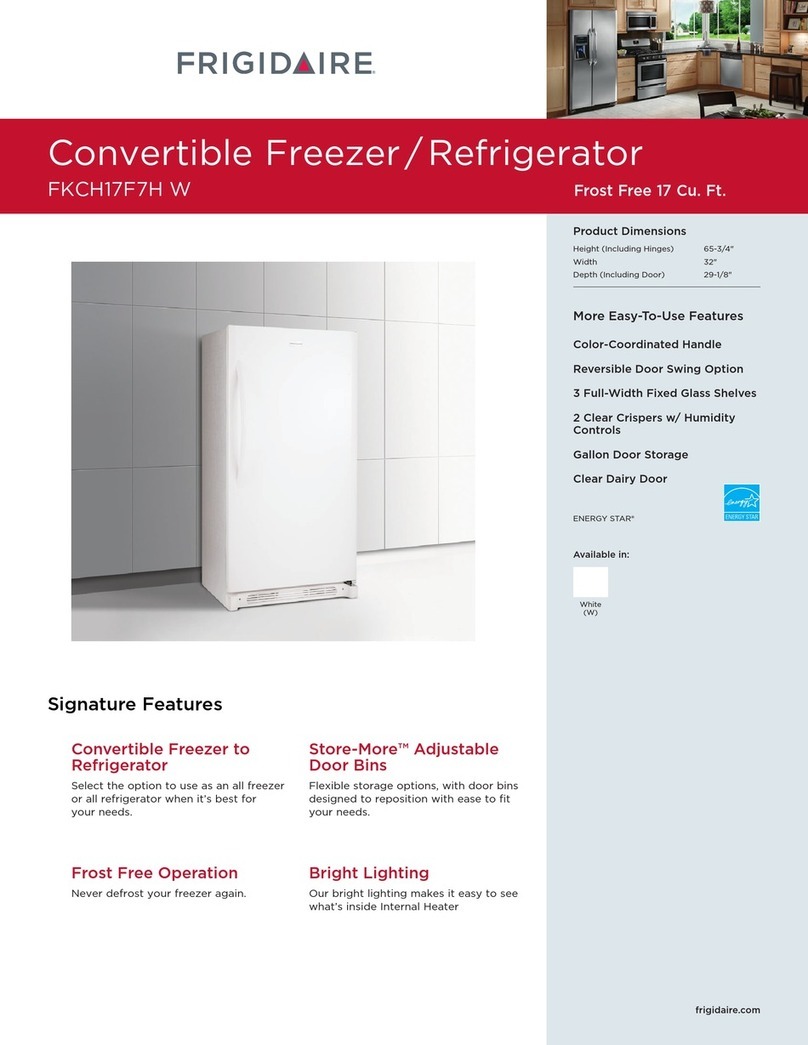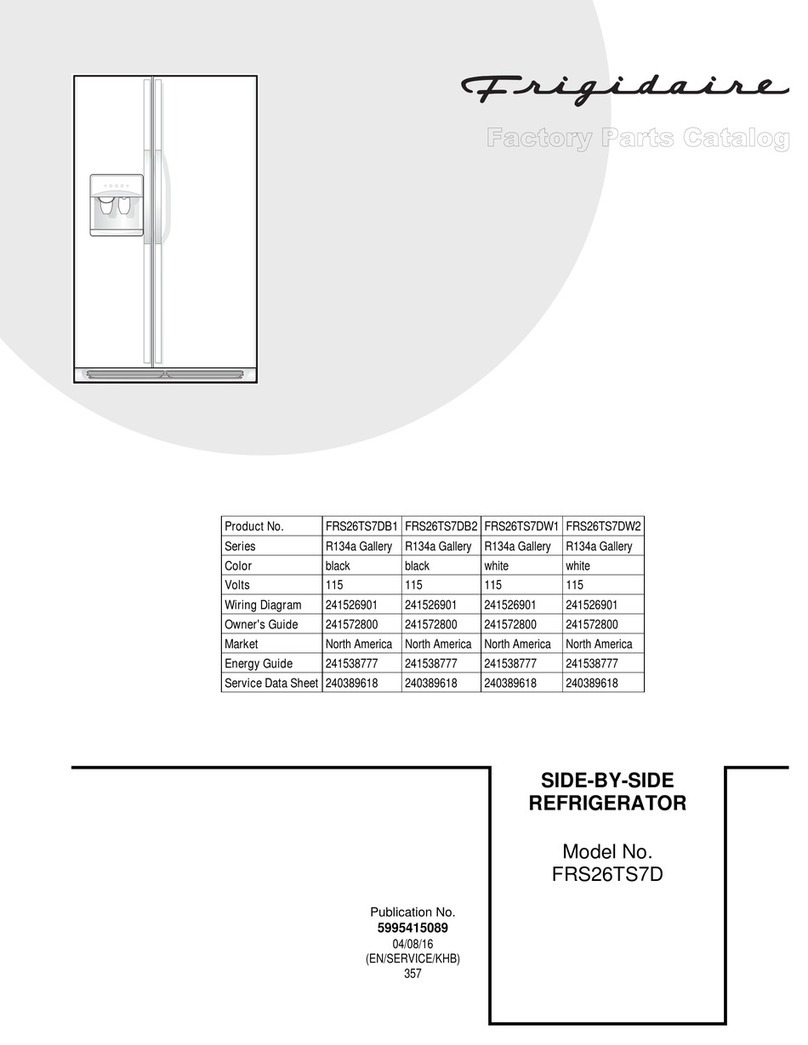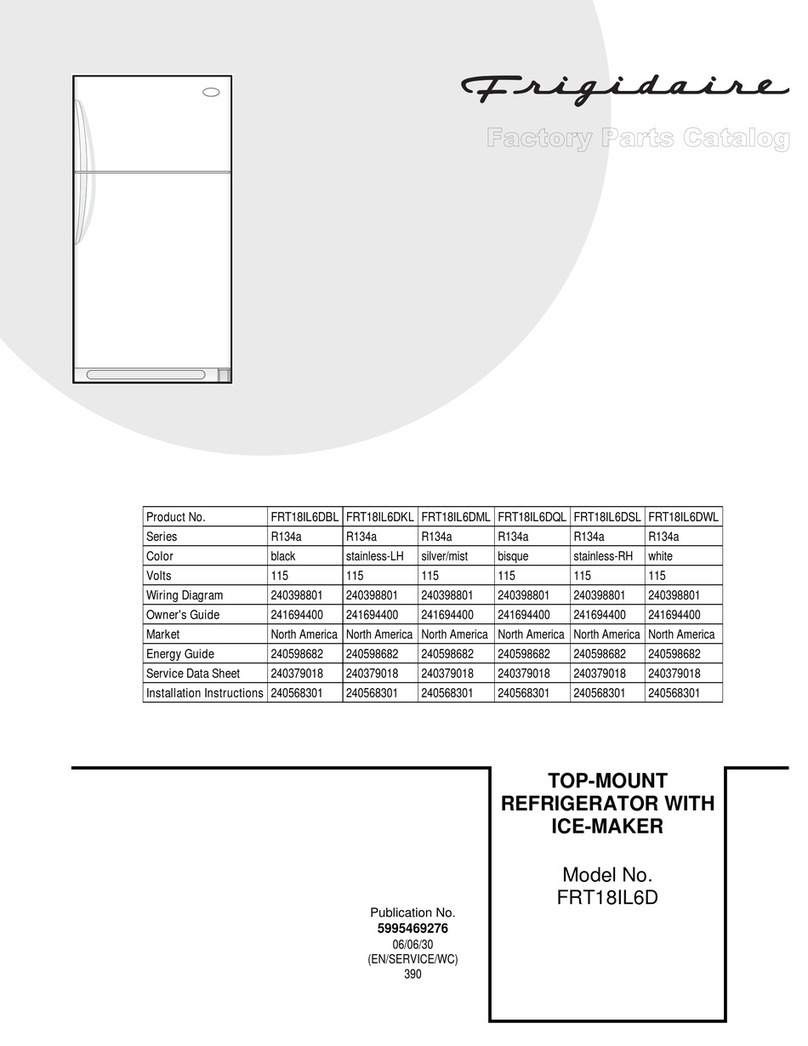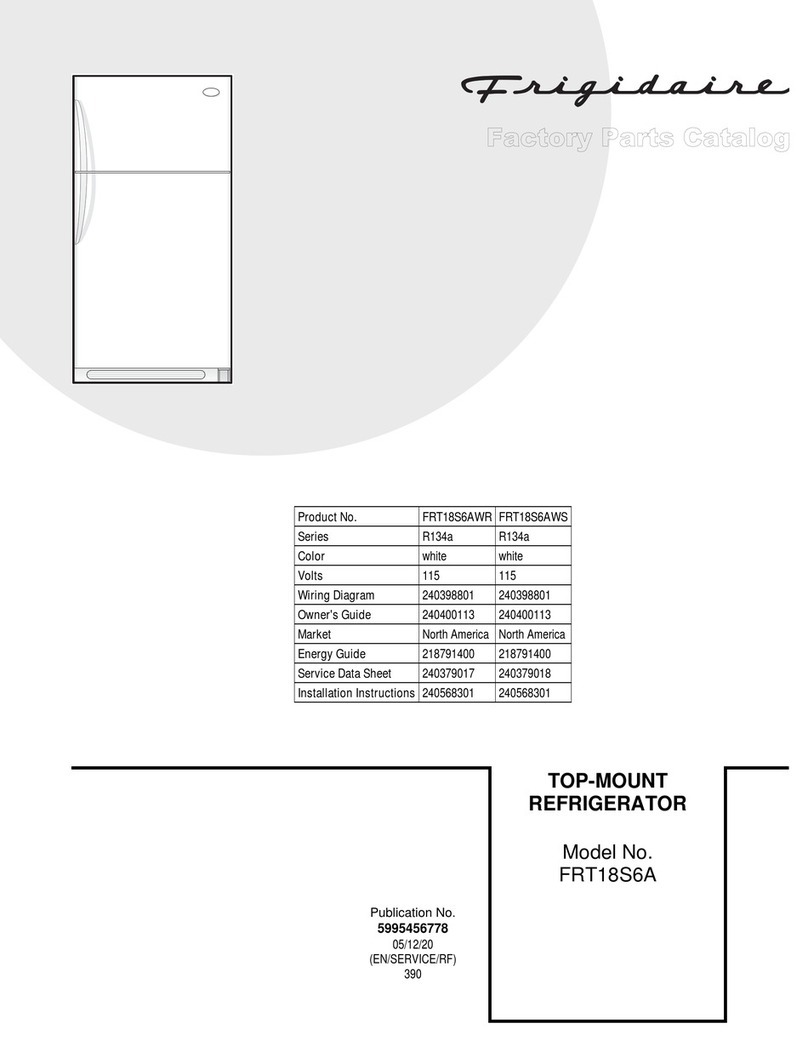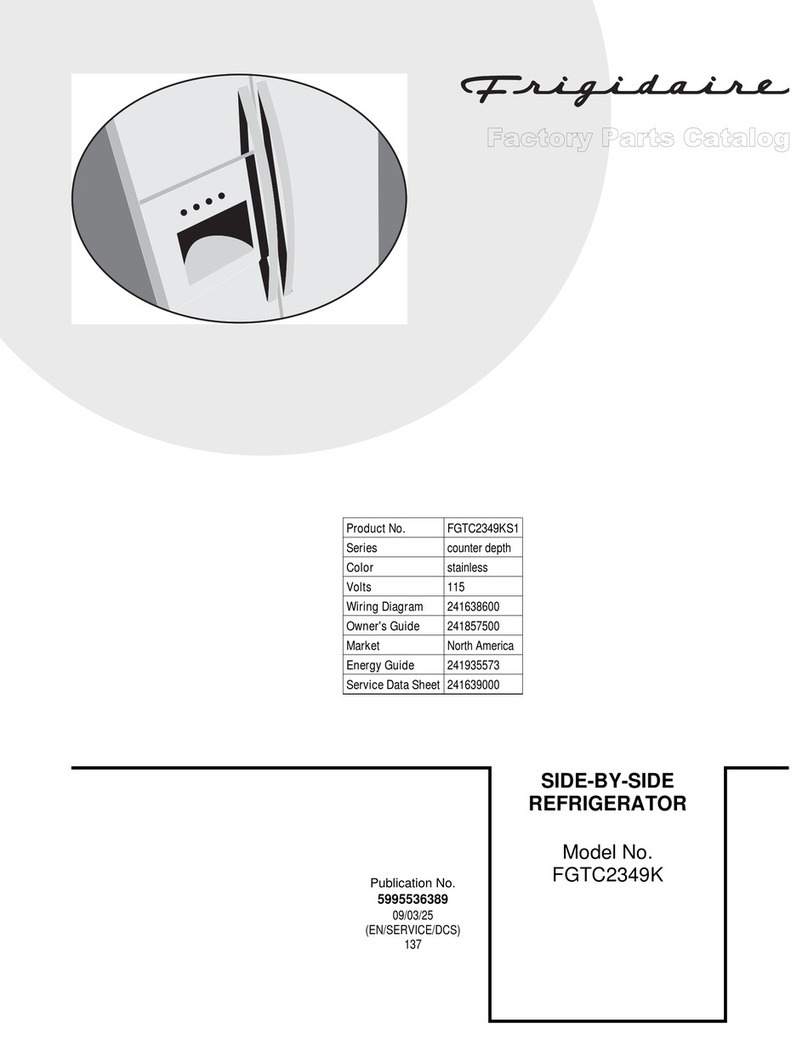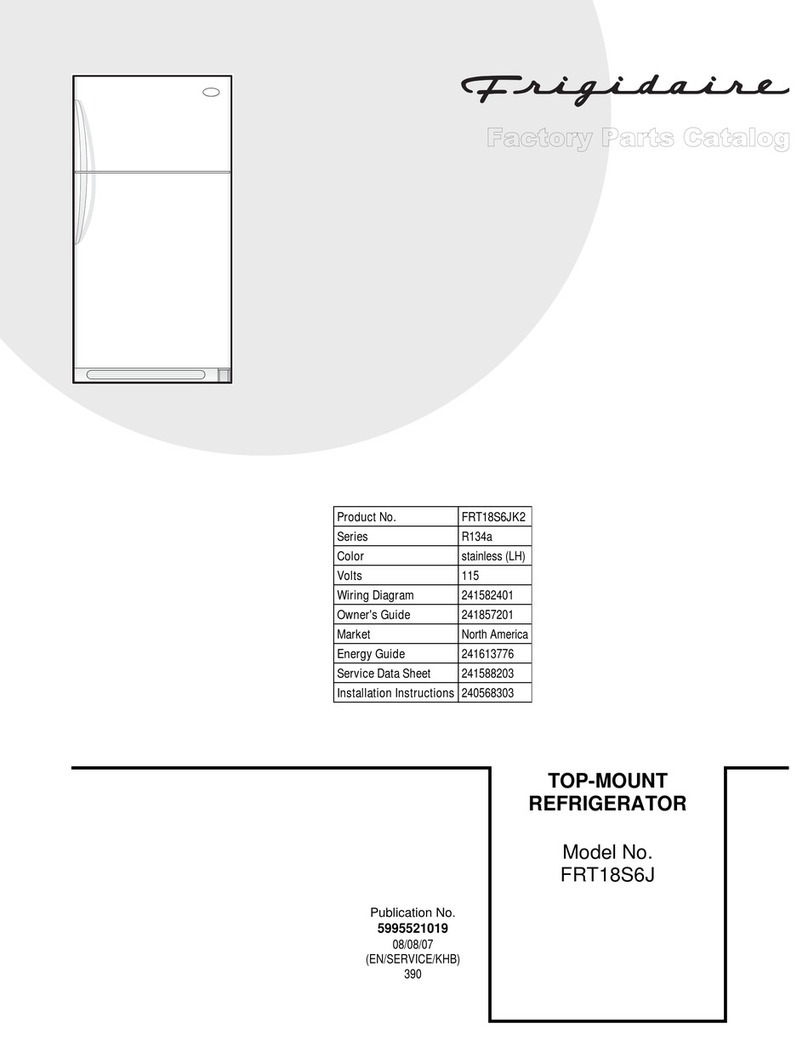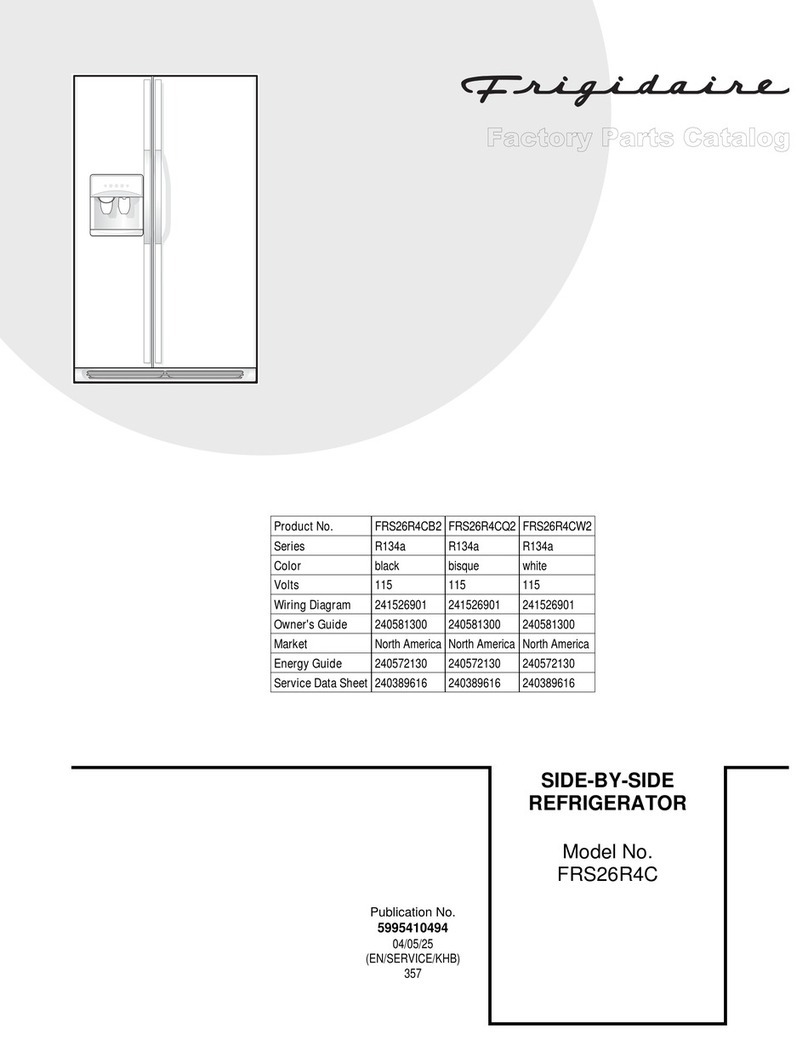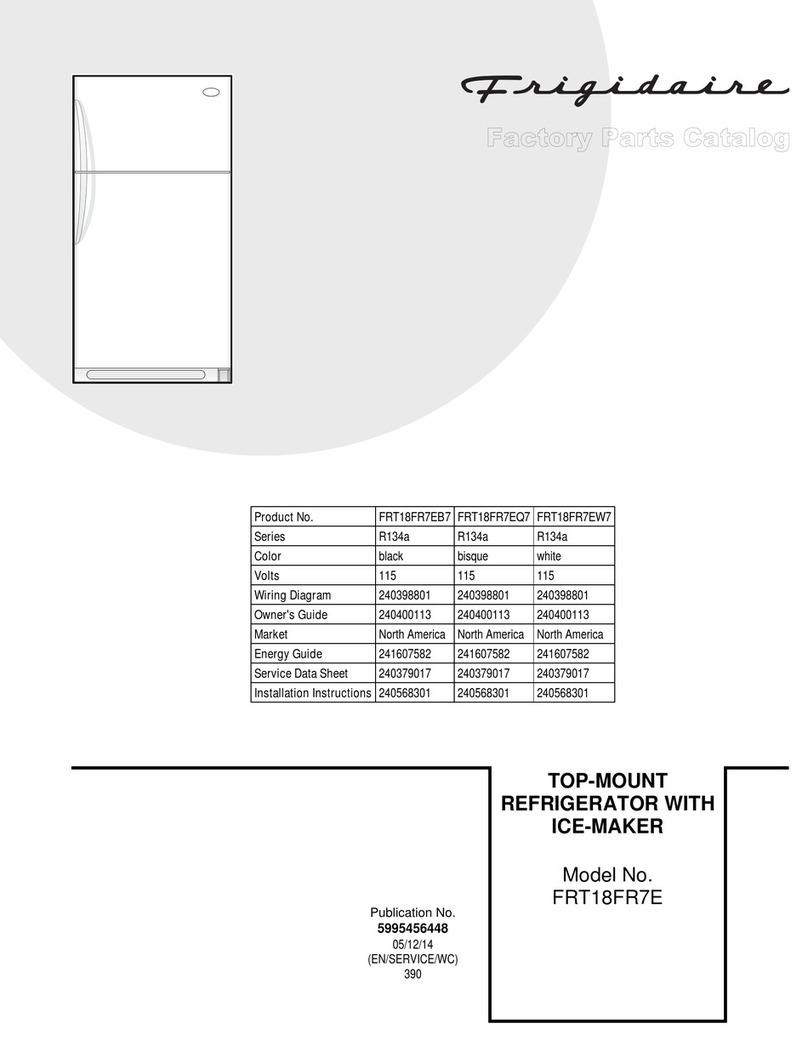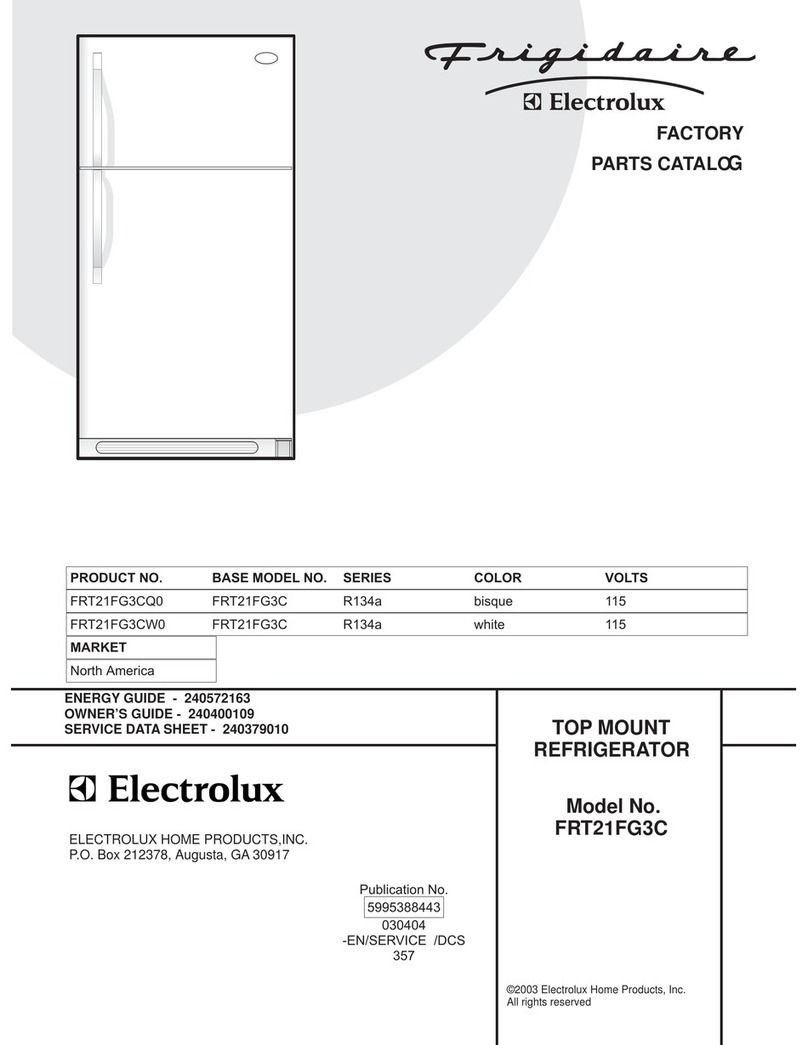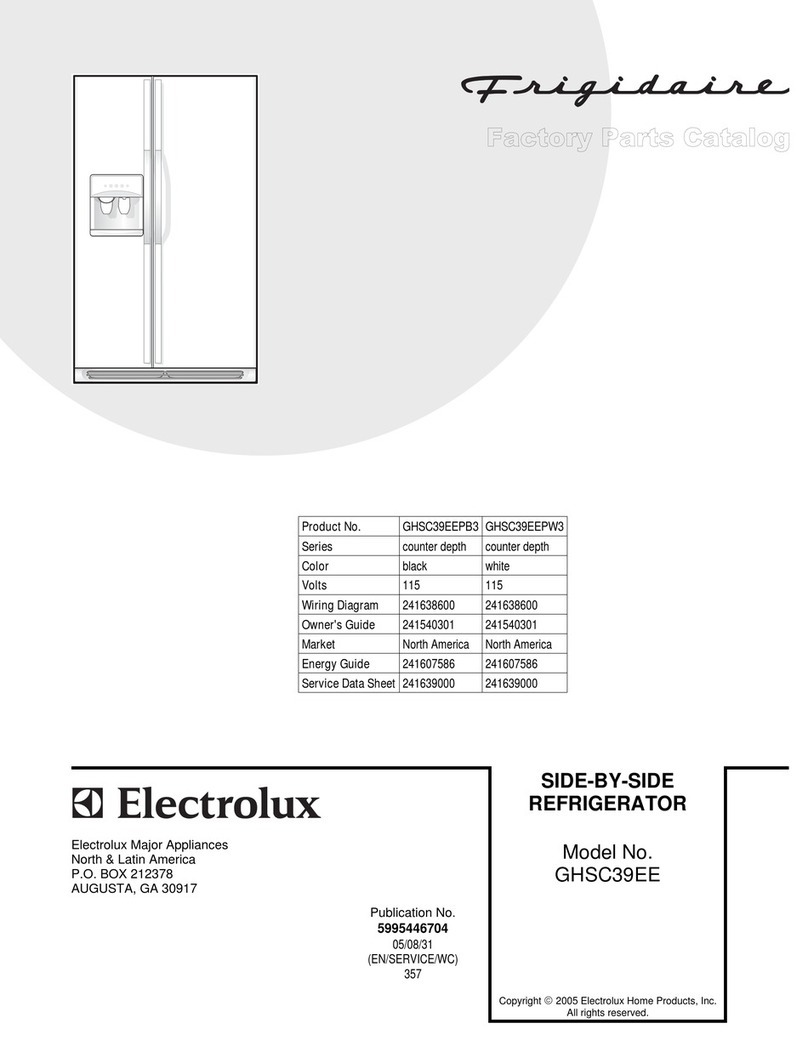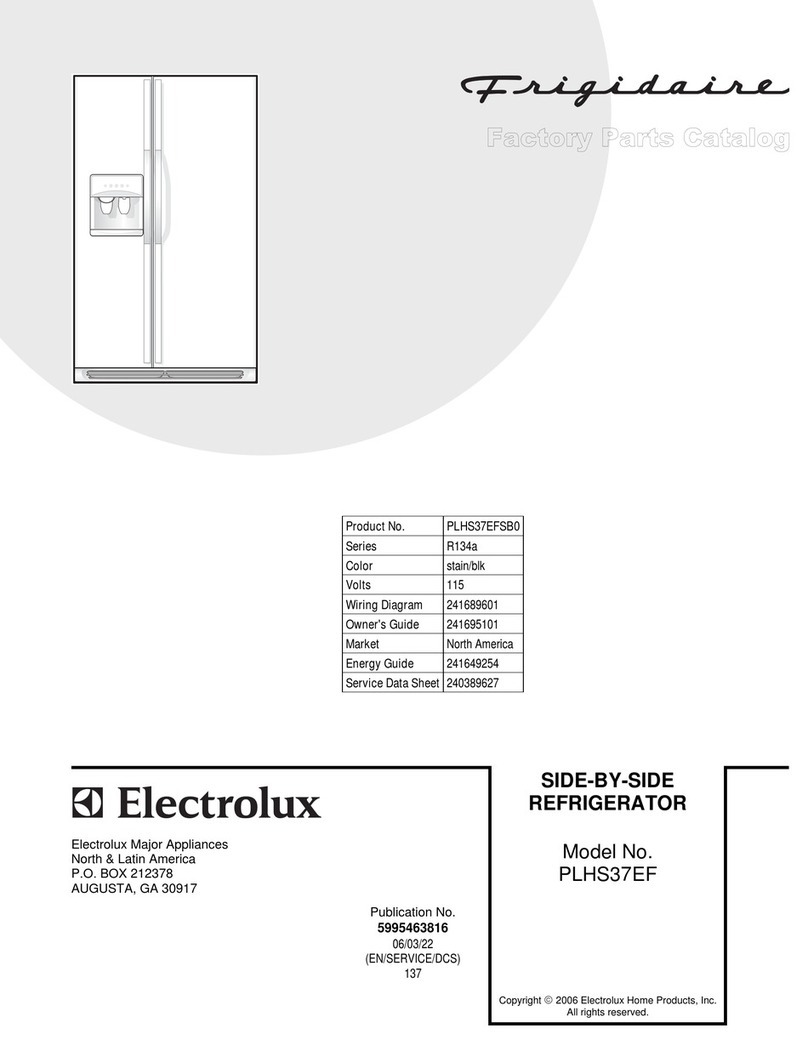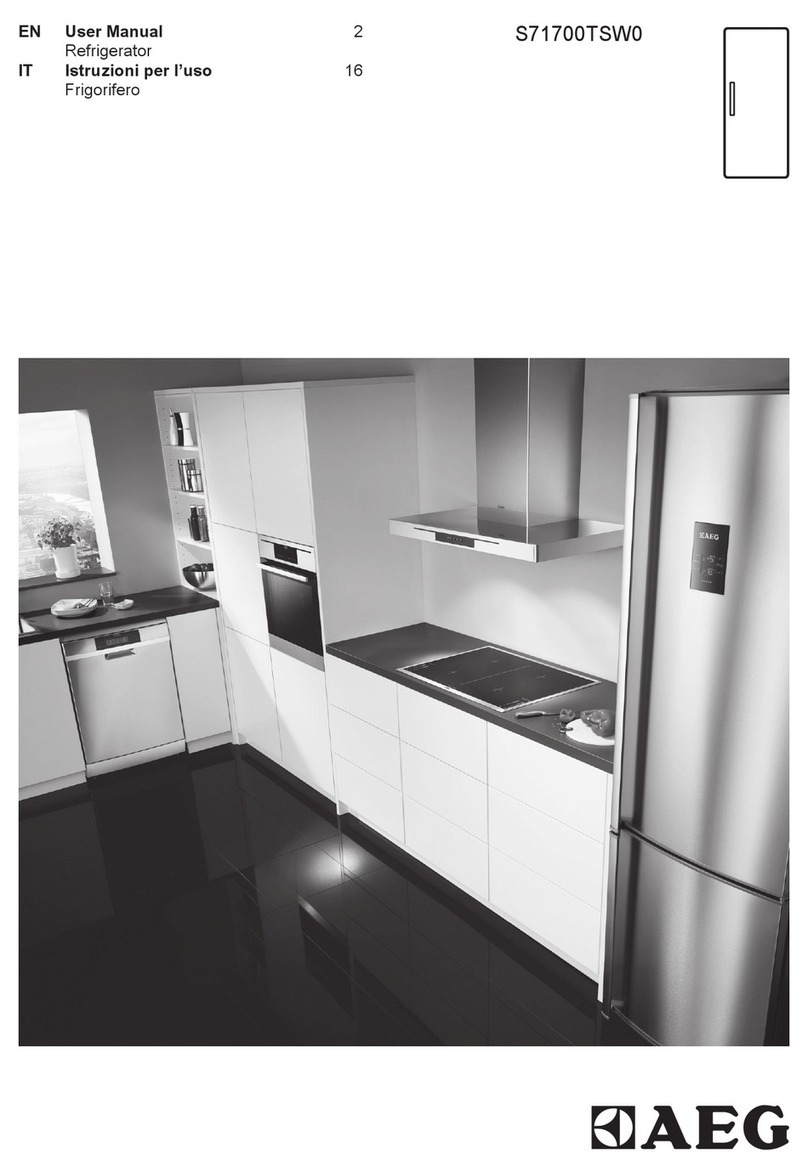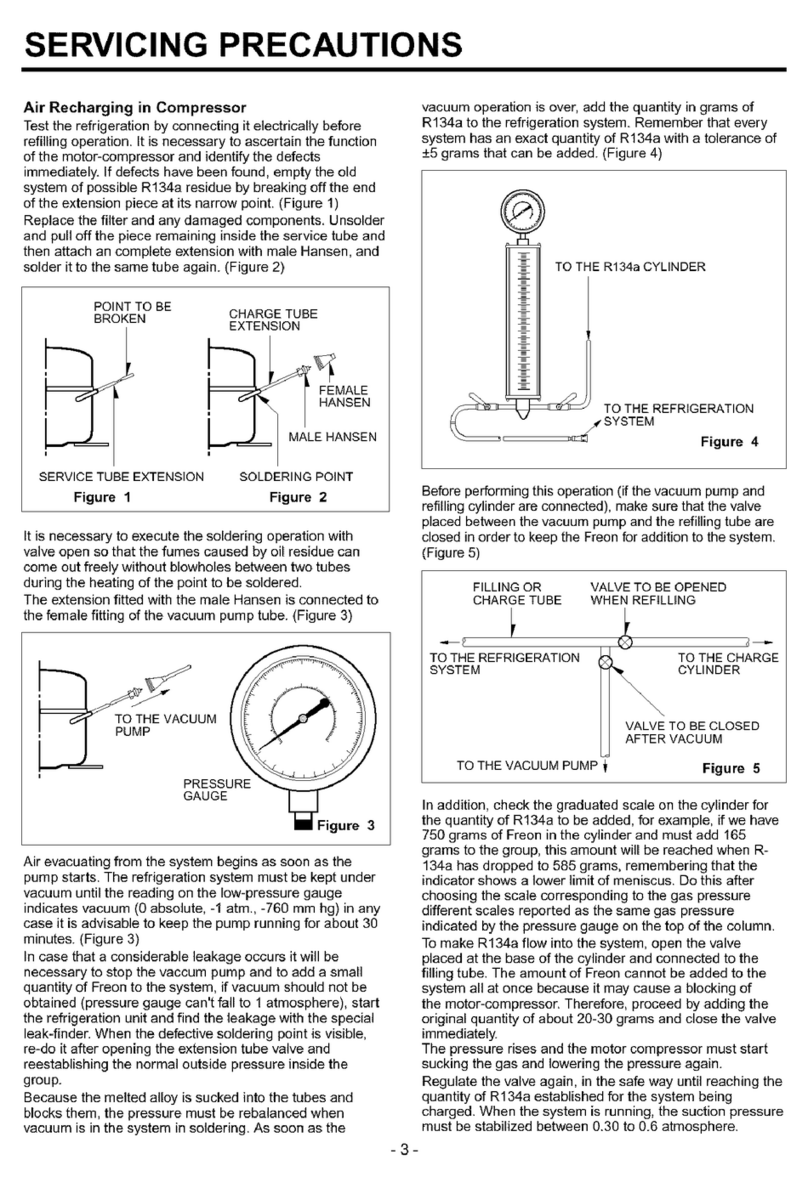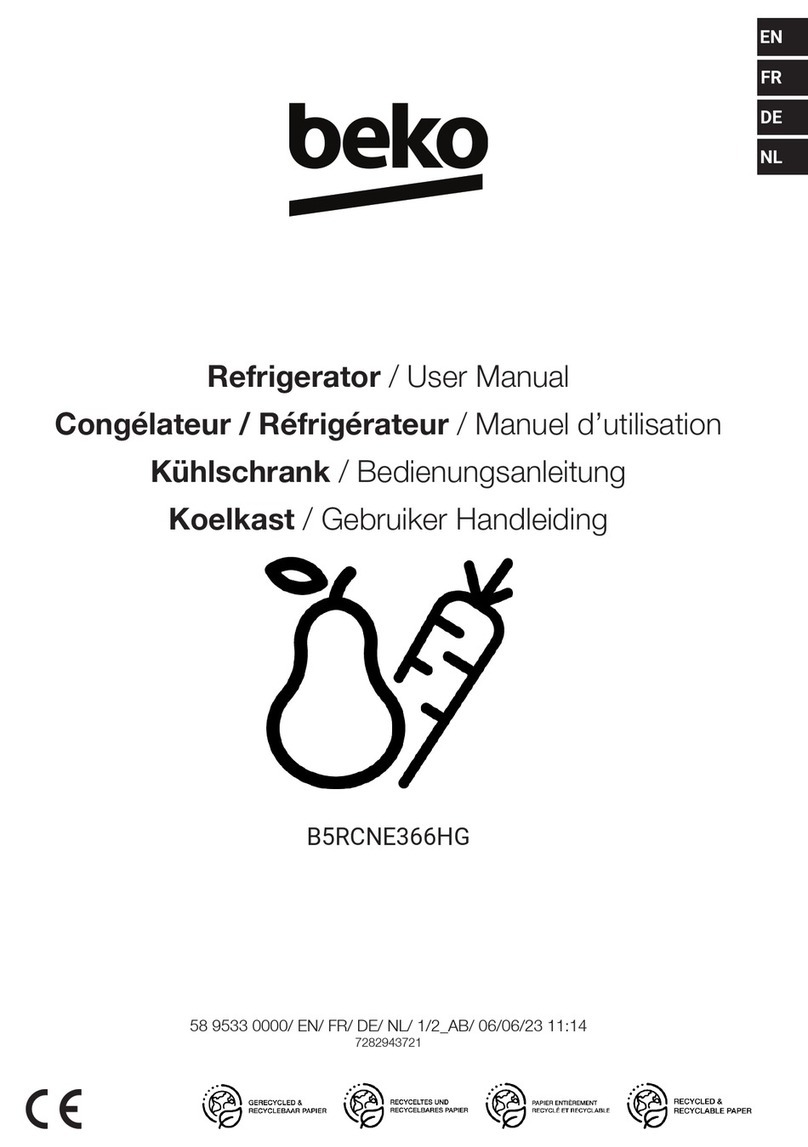
8
TROUBLESHOOTING
GUIDE
PROBLEM
Appliance does not run. *Appliance is plugged into a
circuit that has a ground fault
*Use another circuit. If you are unsure about the
outlet, have it checked by a certified technician.
*Temperature control is in the
"OFF" position.
*See Thermostat Setting.
*Appliance may not be plugged in,
or plug may be loose.
*Ensure plug is tightly pushed into outlet.
*House fuse blown or tripped
circuit breaker.
*Check/replace fuse with a 15 amp time delay
fuse. Reset circuit breaker.
*Power outage *Check house lights. Call local Electric Company.
Appliance runs too much
or too long.
*Room or outside weather is hot. *It's normal for the appliance to work harder under
these conditions.
*Appliance has recently been
disconnected for a period of time.
*It takes 24 hours for the appliance to cool down
com pletely.
*Large amount of warm or hot
food have been stored recently.
*Warm food will cause appliance to run more until
the desired temperature is reached.
*Door is opened too frequentlyor
kept open too long.
*Warm air entering the appliance causes it to run
more. Open the door less often.
*Appliance door may be slightly *See "Door Problems".
*Temperature control is set too
low.
*Turn control knob to a warm er s etting. Allow
several hours for the temperature to stabilize.
*Appliance gaskets are dirty,
worn, cracked or poorly fitted.
*Clean or change gasket. Leaks in the lid seal will
cause appliance to run longer in order to maintain
desired temperature.
Interior appliance
temperature is too cold.
*Temperature control is set too
low.
*Turn control knob to a warm er s etting. Allow
several hours for the temperature to stabilize.
Interior appliance
temperature is too warm.
*Temperature control is set too
warm.
*Turn control knob to a colder setting. Allow several
hours for the temperature to stabilize.
*Door is opened too frequentlyor
kept open too long.
*Warm air entering the appliance causes it to run
more. Open the door less often.
*Appliance door may be slightly *See "Door Problems".
*Large amount of warm or hot
food have been stored recently.
*Wait until the appliance has had a chance to
reach its selected temperature.
*Appliance has recently been
disconnected for a period of time.
*appliance requires 24 hours to cool down
com pletely.
Appliance external
surface temperature is
warm.
*The external appliance walls can
be as much as 30ºF warmer than
room temperature.
*This is normal while the compressor works to
transfer heat from inside the appliance cabinet.
Louder sound levels
whenever appliance is
on.
*Modern appliances have
increased storage capacity and
more stable temperatures. They
require heavy duty compressors.
*This is normal. When the surrounding noise level
is low, you might hear the compressor running
while it cools the interior.
Louder sound levels
when com pres sor
comes on.
*Appliance operates at higher
pressures during the start of the
ON cycle.
*This is normal. Sound will level off or disappear
as appliance continues to run.
Popping or cracking
sound when compressor
comes on.
*Metal parts undergo expansion
and contraction, as in hot water
pipes.
*This is normal. Sound will level off or disappear
as appliance continues to run.
SOUND AND NOISE
CAUSE CORRECTION
Before calling for s ervice, review this lis t. It m ay s ave you tim e and expens e. This lis t
includes common occurrences that are not the result of defective workmanship or
materials in this appliance.
APPLIANCE OPERATION

